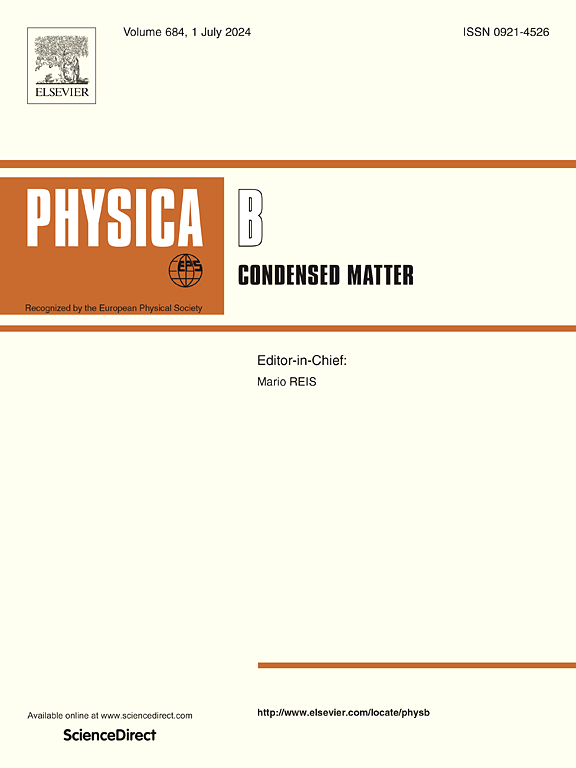从第一性原理计算重温立方砷化硼的点缺陷
IF 2.8
3区 物理与天体物理
Q2 PHYSICS, CONDENSED MATTER
引用次数: 0
摘要
立方砷化硼(c-BAs)以其在室温下的高载流子迁移率和优异的导热性而闻名。利用第一性原理计算,我们重新审视了c- ba中点缺陷的电子和热力学性质。受体缺陷如VB、BAs和SiAs,以及供体缺陷如AsB和SiB预计在富砷和富硼条件下都占主导地位。此外,受体缺陷比施主缺陷表现出更低的形成能,表明c-BAs表现为p型半导体,与实验观察一致。由于VB缺陷具有较高的迁移屏障,预测其具有动态稳定性。此外,AsB的态密度揭示了间隙缺陷态的存在,这可能导致多个复合中心的形成。这项工作为c- ba的缺陷物理提供了有价值的见解,并将支持基于该材料的器件应用的开发。本文章由计算机程序翻译,如有差异,请以英文原文为准。
Revisiting point defects in cubic boron arsenide from first-principles calculations
Cubic boron arsenide (c-BAs), known for its high carrier mobilities and exceptional thermal conductivity at room temperature, was successfully synthesized via chemical vapor transport. Using first-principles calculations, we revisit the electronic and thermodynamic properties of point defects in c-BAs. Acceptor defects such as VB, BAs, and SiAs, as well as donor defects like AsB and SiB are expected to dominate under both arsenic-rich and boron-rich conditions. Furthermore, acceptor defects exhibit lower formation energies than donor defects, indicating that c-BAs behaves as a p-type semiconductor, consistent with experimental observations. The VB defect is predicted to be dynamically stable due to its high migration barrier. Additionally, the density of states of AsB reveals the presence of in-gap defect states, which could lead to the formation of multiple recombination centers. This work provides valuable insights into the defect physics of c-BAs and will support the development of device applications based on this material.
求助全文
通过发布文献求助,成功后即可免费获取论文全文。
去求助
来源期刊

Physica B-condensed Matter
物理-物理:凝聚态物理
CiteScore
4.90
自引率
7.10%
发文量
703
审稿时长
44 days
期刊介绍:
Physica B: Condensed Matter comprises all condensed matter and material physics that involve theoretical, computational and experimental work.
Papers should contain further developments and a proper discussion on the physics of experimental or theoretical results in one of the following areas:
-Magnetism
-Materials physics
-Nanostructures and nanomaterials
-Optics and optical materials
-Quantum materials
-Semiconductors
-Strongly correlated systems
-Superconductivity
-Surfaces and interfaces
 求助内容:
求助内容: 应助结果提醒方式:
应助结果提醒方式:


